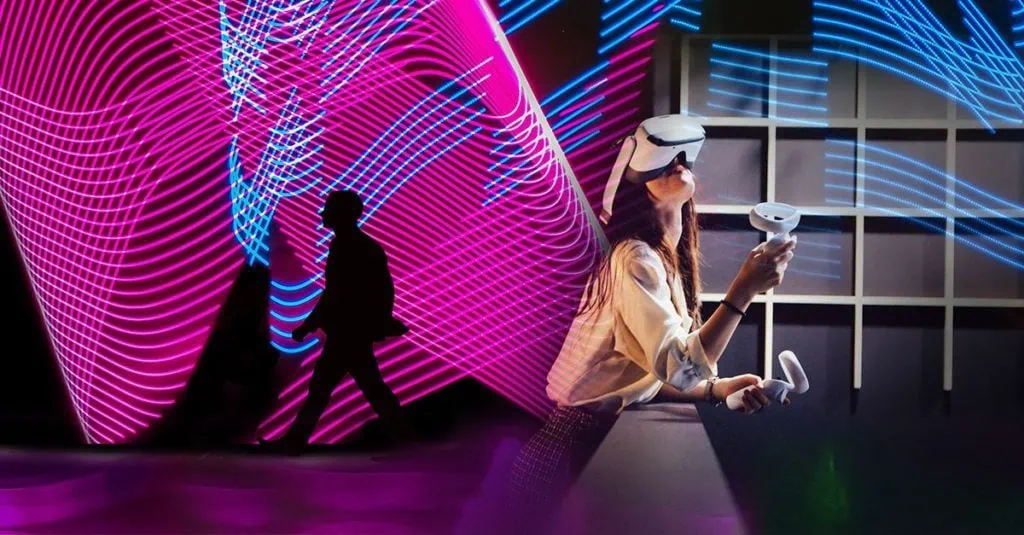Immersive Virtual Reality (VR) is a cutting-edge technology that aims to transport users into a three-dimensional, computer-generated environment, creating a sense of complete immersion. This article explores the concept of immersive VR, its components, and how it has revolutionized various industries through its capacity to provide users with an unparalleled virtual experience.
Immersive VR, often referred to simply as “immersive Virtual Reality,” is a subset of Virtual Reality technology designed to offer users a heightened sense of presence and immersion in a digital environment. The term “immersive” in this context signifies the ability of VR technology to fully immerse users in a three-dimensional (3D) virtual world, blurring the lines between reality and simulation.
To achieve full immersion, immersive VR typically involves the following components:
The core setup is the Head-Mounted Display, or HMD. This device is worn on the user’s head and contains displays for each eye, creating a stereoscopic 3D effect. HMDs often include integrated sensors to track head movements, allowing users to look around and interact with the virtual environment naturally.
Haptic feedback devices are crucial for providing a tactile sense of immersion. These devices can include gloves, vests, or controllers that enable users to touch and feel objects within the virtual world. Haptic feedback adds a sensory dimension to the VR experience, making it more realistic.
VR relies on advanced VR technology, including powerful graphics processing units (GPUs) and tracking systems that monitor the user’s movements with high precision. These technologies work together to create a seamless and responsive virtual environment.
What sets immersive VR apart from standard VR experiences is the level of immersion it achieves. In fully immersive VR, users feel as though they have been transported to another world entirely. They can interact with objects, explore their surroundings, and even communicate with other users within the VR environment. This level of immersion is particularly valuable in various industries, including:
VR has revolutionized the gaming industry by providing players with unparalleled gaming experiences. Gamers can step into the shoes of their in-game avatars, wielding virtual weapons, and navigating virtual worlds with unprecedented realism.
Industries such as aviation, healthcare, and the military have embraced VR for training purposes. Simulation environments allow trainees to practice skills and scenarios in a safe, controlled, and highly realistic setting. Read more about it in our whitepaper.
Architects and designers use immersive VR to create virtual walkthroughs of buildings and spaces. For example, this allows clients and stakeholders to explore and interact with architectural designs before construction begins.
Virtual Reality is also making strides in education, providing students with immersive learning experiences. Subjects ranging from history to science can be taught in a way that engages and excites learners.
Finally, VR technology has transformed the way we interact with digital environments, pushing the boundaries of human experience. Through the use of head-mounted displays, haptic feedback, and advanced VR technology, immersive VR offers users the opportunity to be fully immersed in three-dimensional virtual worlds. This technology has found applications in various industries, from gaming and training to architecture and education, enhancing our ability to learn, create, and explore in ways previously unimaginable. As technology continues to advance, the potential for immersive VR to shape our future experiences is boundless.

© 2024 VRdirect GmbH. All rights reserved.